Introduction to Private Japanese Sound Bath Experiences in Kyoto
A private Japanese sound bath in Kyoto offers an immersive escape into tranquility, harmonizing ancient traditions with the city’s serene ambiance. These experiences invite guests to rest on tatami mats or cushions while enveloped by gentle tones produced by traditional instruments. The interplay of sound, silence, and subtle resonance cultivates a profound sense of relaxation that lingers long after the session ends.
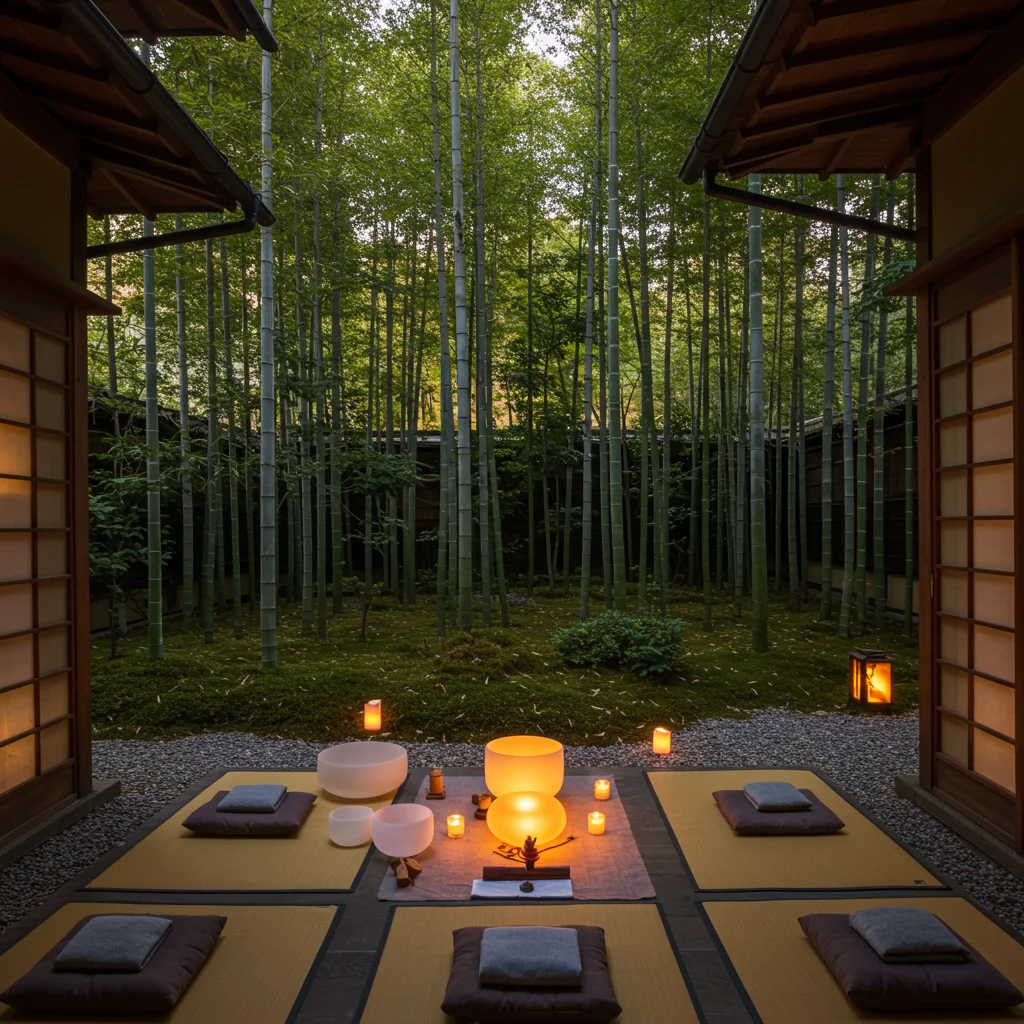
Kyoto, with its rich cultural legacy and peaceful settings, provides the perfect backdrop for this restorative practice. Whether seeking deep relaxation, mindful presence, or a unique cultural encounter, a private sound bath in the heart of Japan can be a transformative highlight of your journey.
What Is a Sound Bath?
A sound bath is a meditative experience where participants are “bathed” in waves of harmonious sounds and vibrations. Unlike traditional music performances, the focus is on therapeutic listening rather than entertainment. The session is designed to soothe the mind and body, promote relaxation, and foster a sense of inner peace.
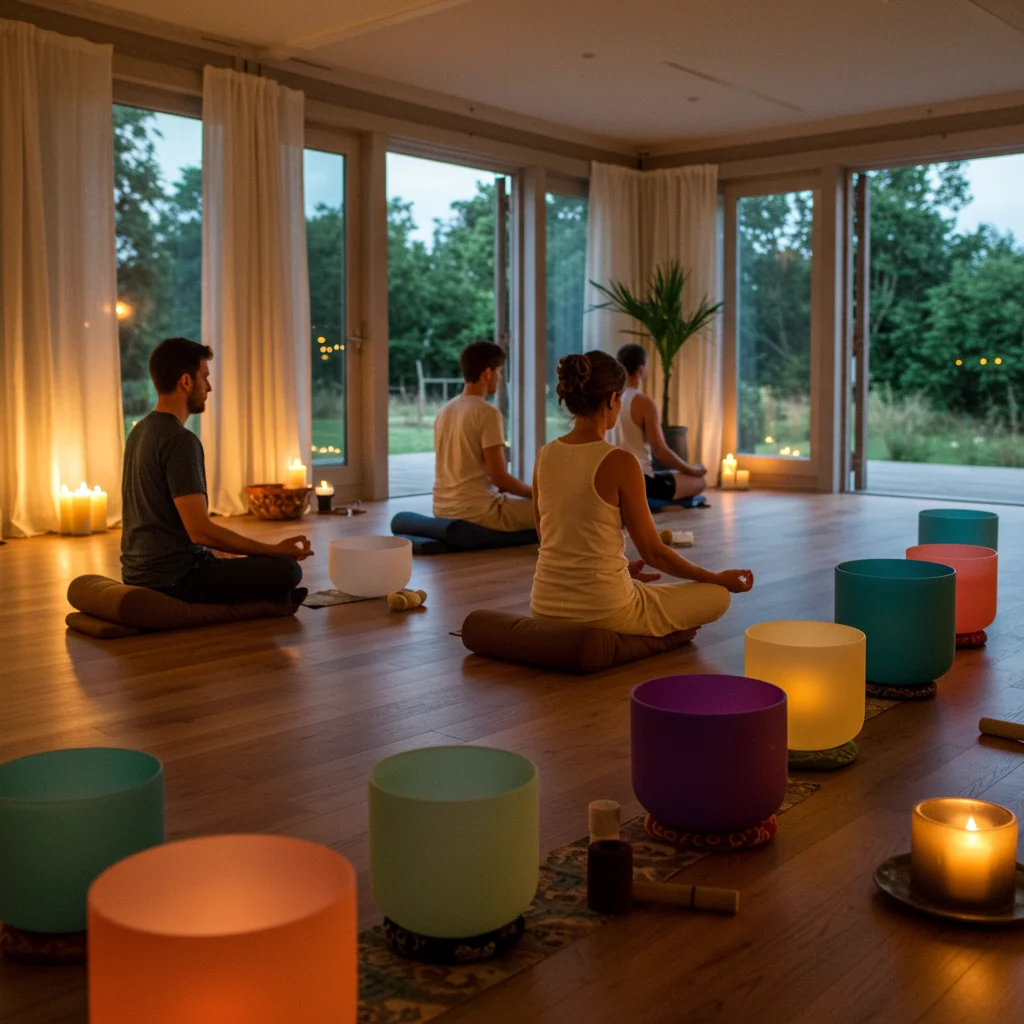
How Does a Sound Bath Work?
During a sound bath, practitioners use a variety of instruments—such as singing bowls, gongs, chimes, and flutes—to create layers of resonant sound. The vibrations gently flow through the space, encouraging participants to let go of tension and drift into deeper states of awareness. Many find the experience meditative, even if they have no previous background in mindfulness or meditation.
What Instruments Are Used in Sound Baths?
Sound bath instruments vary but typically include singing bowls (both Japanese and Tibetan), gongs, bells, chimes, and sometimes stringed instruments or flutes. Each instrument produces unique frequencies that interact harmoniously, creating a tapestry of sound that envelops the listener.
The History and Origins of Sound Baths
Sound healing practices have roots in many cultures, with Japan offering its own distinctive traditions. The concept of using sound for well-being dates back centuries, intertwining with spiritual and ritualistic practices across Asia.

The Role of Sound Healing in Japanese Culture
In Japan, sound has long been associated with purification, meditation, and spiritual development. Bells and chimes are often used in temples to mark the passage of time or to signal the beginning of ceremonies, symbolizing the clearing of negative energy.
Traditional Japanese Instruments Used in Sound Baths
Kyoto’s sound bath practitioners often employ shakuhachi flutes, koto zithers, and rin gongs in their sessions. These instruments produce gentle, lingering tones that evoke the tranquility of Japanese gardens and temples.
Influence of Zen Buddhism on Sound Therapy
Zen Buddhism, with its emphasis on mindfulness and simplicity, has profoundly influenced Japanese sound healing. Monks have historically used sound as a meditative tool, whether through chanting, the rhythmic beat of the mokugyo drum, or the resonant ring of a temple bell.
Evolution of Sound Bath Practices in Kyoto
Over time, Kyoto’s sound bath practices have evolved, blending traditional techniques with modern wellness philosophies. Today, practitioners may incorporate mindfulness exercises, guided meditation, and even contemporary instruments to create a holistic experience tailored to each guest.
Why Choose Kyoto for a Sound Bath Experience?
Kyoto stands out as one of Japan’s most spiritually charged cities, making it an ideal setting for a private sound bath. The city’s deep-rooted traditions and tranquil landscapes provide a unique context for this restorative practice.

Kyoto’s Spiritual and Cultural Heritage
Home to ancient temples, shrines, and UNESCO World Heritage sites, Kyoto radiates an atmosphere of reverence and calm. This heritage enriches every sound bath, infusing sessions with a sense of timelessness and connection to centuries-old rituals.
Peaceful Settings: Temples, Ryokans, and Gardens
Sound baths in Kyoto are frequently held in picturesque venues, such as moss-covered temple halls, serene ryokan inns, or secluded gardens. The scent of tatami, the gentle rustle of bamboo, and the filtered sunlight create an environment where relaxation feels effortless.
How Kyoto’s Ambiance Enhances Sound Healing
The city’s natural beauty and contemplative spaces help participants settle into a state of deep rest. Birdsong, the distant toll of temple bells, and the subtle fragrance of incense all contribute to a multisensory experience that amplifies the effects of sound healing.
What Makes a Sound Bath ‘Private’?
A private sound bath in Kyoto offers an exclusive and personalized approach, focusing entirely on your needs and preferences. Unlike group sessions, you have the practitioner’s full attention, allowing for a more tailored and intimate experience.
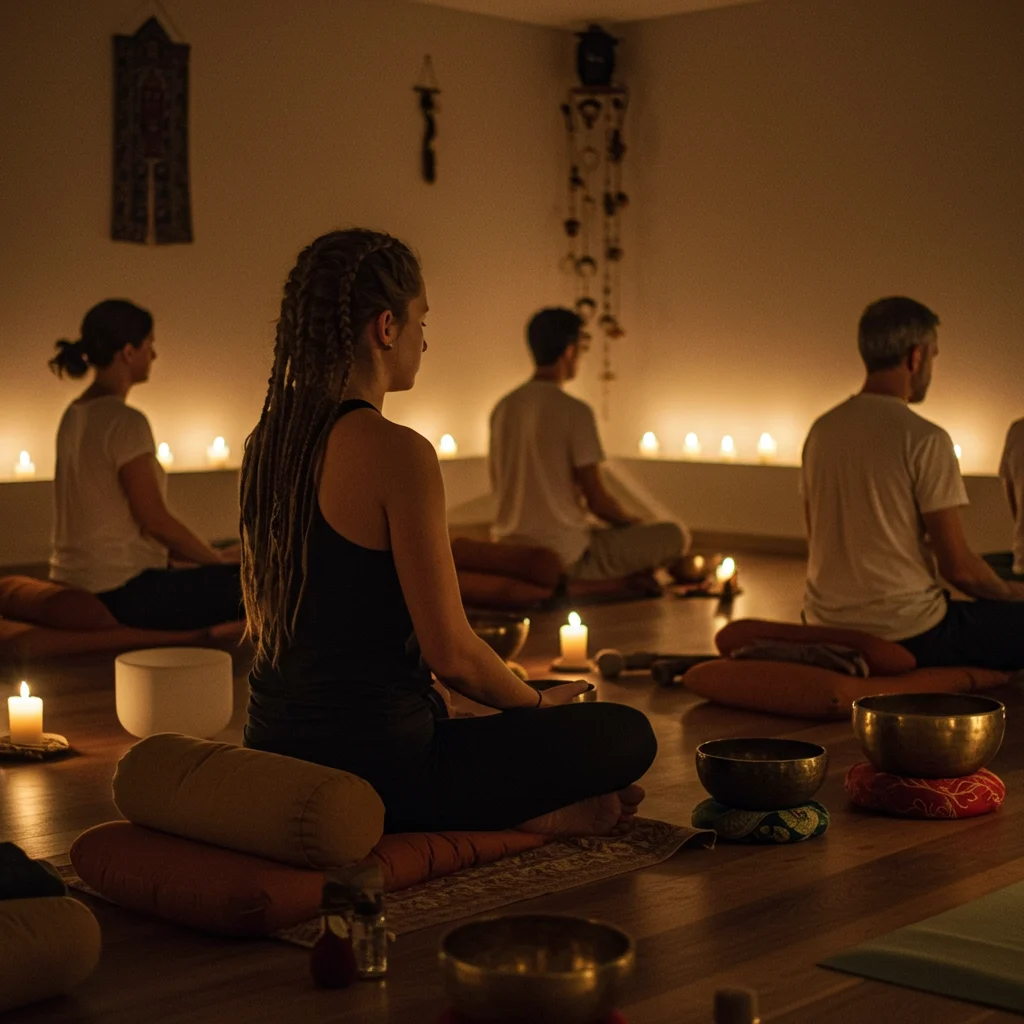
Benefits of a Private Experience vs. Group Sessions
Private sessions allow you to select the pace, duration, and even the specific instruments used. This customization can lead to deeper relaxation and more targeted outcomes, especially for those with specific wellness goals or sensitivities.
Customizing Your Private Sound Bath
Many practitioners offer options to integrate guided meditation, intention-setting, or breathwork. You might also request particular instruments or styles, ensuring the session resonates with your personal preferences. Some venues even offer sound baths for couples or families, fostering shared moments of peace.
Who Should Consider a Private Sound Bath?
A private session is ideal for anyone seeking a deeply restorative experience, those with sensory sensitivities, or travelers celebrating a special occasion. Individuals new to sound healing may also appreciate the focused guidance and gentle introduction that private sessions provide.
Popular Locations for Private Sound Baths in Kyoto
Kyoto boasts a variety of venues where private sound baths are offered, each providing a distinct atmosphere and set of amenities. Whether you seek tradition, luxury, or a connection to nature, the city caters to every preference.
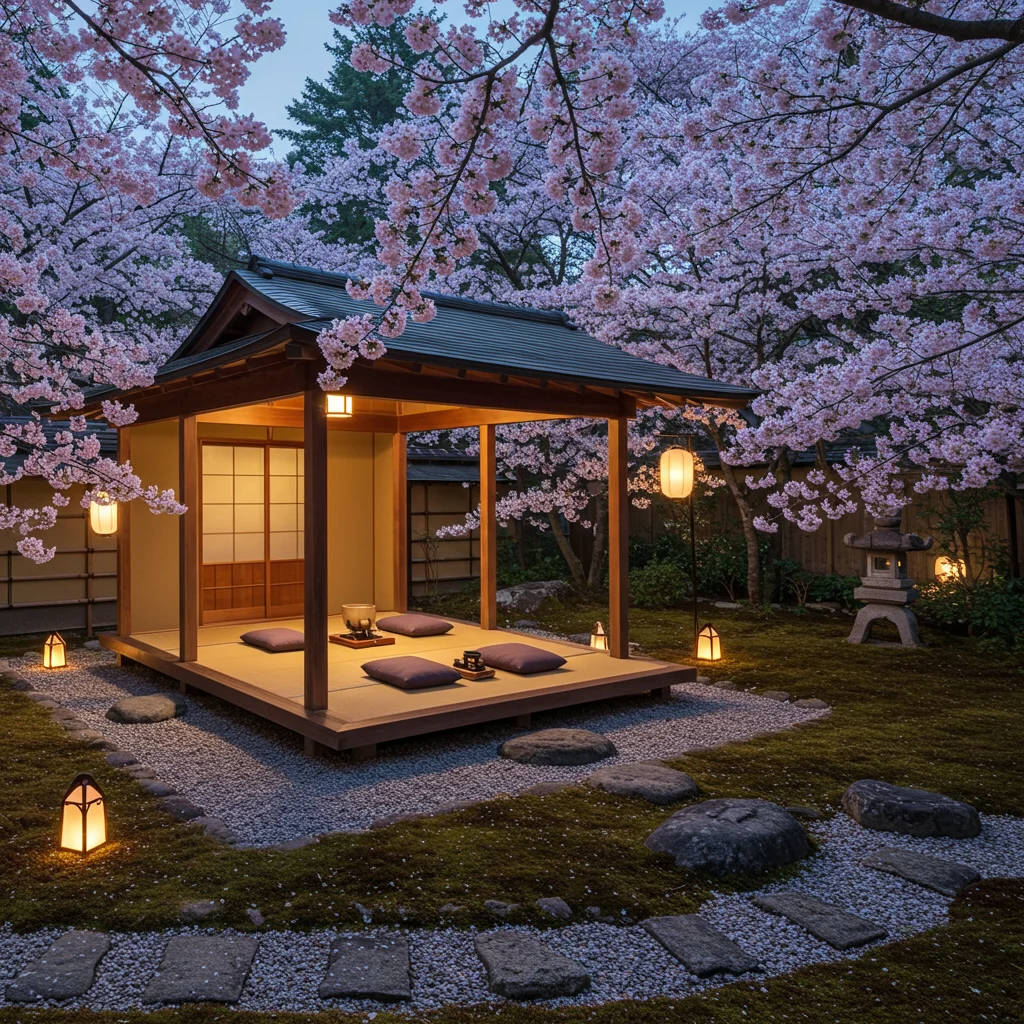
Traditional Temples Offering Sound Bath Sessions
Several temples in Kyoto open their doors to private wellness experiences. These sessions often take place in tranquil tatami rooms, surrounded by centuries-old architecture and lush temple gardens. The resonance of sound in these sacred spaces is particularly profound.
Luxury Ryokans and Boutique Hotels
Upscale ryokans and boutique hotels increasingly offer private sound baths as part of their wellness menus. Guests can enjoy the ritual in the comfort of their suites or within private spa areas, often accompanied by additional services like aromatherapy or tea ceremonies.
Wellness Centers and Holistic Studios
Dedicated wellness studios in Kyoto specialize in sound healing and related therapies. These venues often feature modern comforts alongside traditional aesthetics, and their practitioners may hold certifications in sound therapy or holistic health.
Outdoor Sound Bath Experiences in Kyoto’s Nature
Some providers arrange sound baths in outdoor settings—by streams, in bamboo groves, or within secluded gardens. The interplay of natural sounds, like flowing water and birdsong, with the instruments’ tones creates a uniquely grounding experience. Readers interested in outdoor relaxation might also appreciate our article on bamboo rafting and limestone foot massage in Jamaica, which offers another perspective on nature-based wellness.
How to Book a Private Japanese Sound Bath in Kyoto
Securing an authentic and memorable sound bath experience in Kyoto requires a bit of planning. Following a few key steps ensures you’ll find a provider and setting that align with your expectations.

Finding Authentic Providers
Look for practitioners with a background in traditional Japanese music or accredited sound therapy. Many reputable providers are affiliated with temples, established wellness centers, or luxury accommodations.
What to Look for When Booking
Consider aspects such as session length, privacy, language options, and the types of instruments used. It’s also helpful to read past guest reviews and inquire about any special amenities or packages.
Recommended Sound Bath Practitioners in Kyoto
Some of Kyoto’s finest sound bath facilitators are known for their sensitivity, experience, and ability to tailor sessions. Many offer consultations ahead of time to discuss your intentions and preferences, ensuring a meaningful encounter.
Booking in Advance: Tips and Considerations
Private sound baths are often in high demand, particularly during peak travel seasons. We recommend booking well in advance to secure your preferred time and venue. For those who like to plan their trip in one place, Viator is a convenient platform to find tours and book activities.
What to Expect During Your Private Sound Bath Session
Understanding the flow of a typical sound bath session can help you relax and fully immerse yourself in the experience. Most practitioners provide gentle guidance throughout, ensuring your comfort from arrival to conclusion.

Pre-Session Preparation and Arrival
Arrive a few minutes early to settle in and discuss any preferences or sensitivities with your practitioner. The space is usually prepared with mats, cushions, soft lighting, and perhaps a subtle aroma of incense or essential oils.
Typical Session Structure
Sound bath sessions usually begin with a brief introduction and intention-setting, followed by the main sound immersion. The practitioner may guide you through gentle breathing or mindfulness exercises before commencing the performance.
Duration and Flow of a Sound Bath
Sessions typically last between 45 to 90 minutes. The tempo and intensity of the sounds may vary, starting gently, building in complexity, and then returning to a peaceful quietude.
Personalization and Special Requests
Guests can often request particular instruments, specific sound frequencies, or a focus on certain themes, such as stress relief or emotional balance. Personalization adds depth and resonance to the experience.
Post-Session Reflection and Integration
After the session, you’ll have time to rest, reflect, and gradually return to everyday awareness. Many practitioners offer tea or water, and encourage journaling or quiet contemplation to help integrate the experience. As experts often say:
“Sound healing is not just about what you hear, but what you feel—let the vibrations carry you to a place of calm you never knew existed.”
What Should You Wear and Bring?
Comfort is key for a sound bath. Choosing the right attire and bringing a few thoughtful items will help you settle in and fully enjoy the session.

Recommended Attire for Comfort
Wear loose, comfortable clothing—such as yoga pants and a soft top. Layers are helpful, as temperatures in temple halls or traditional buildings can fluctuate. Avoid restrictive garments and heavy jewelry.
Items to Bring to Enhance Your Experience
Consider bringing a water bottle, light shawl, or eye mask for added comfort. Some participants also bring a small journal to jot down reflections after the session.
Preparing Mentally for a Sound Bath
Mental preparation can significantly enhance your sound bath experience. Approaching the session with openness and intention allows you to receive its full benefits.
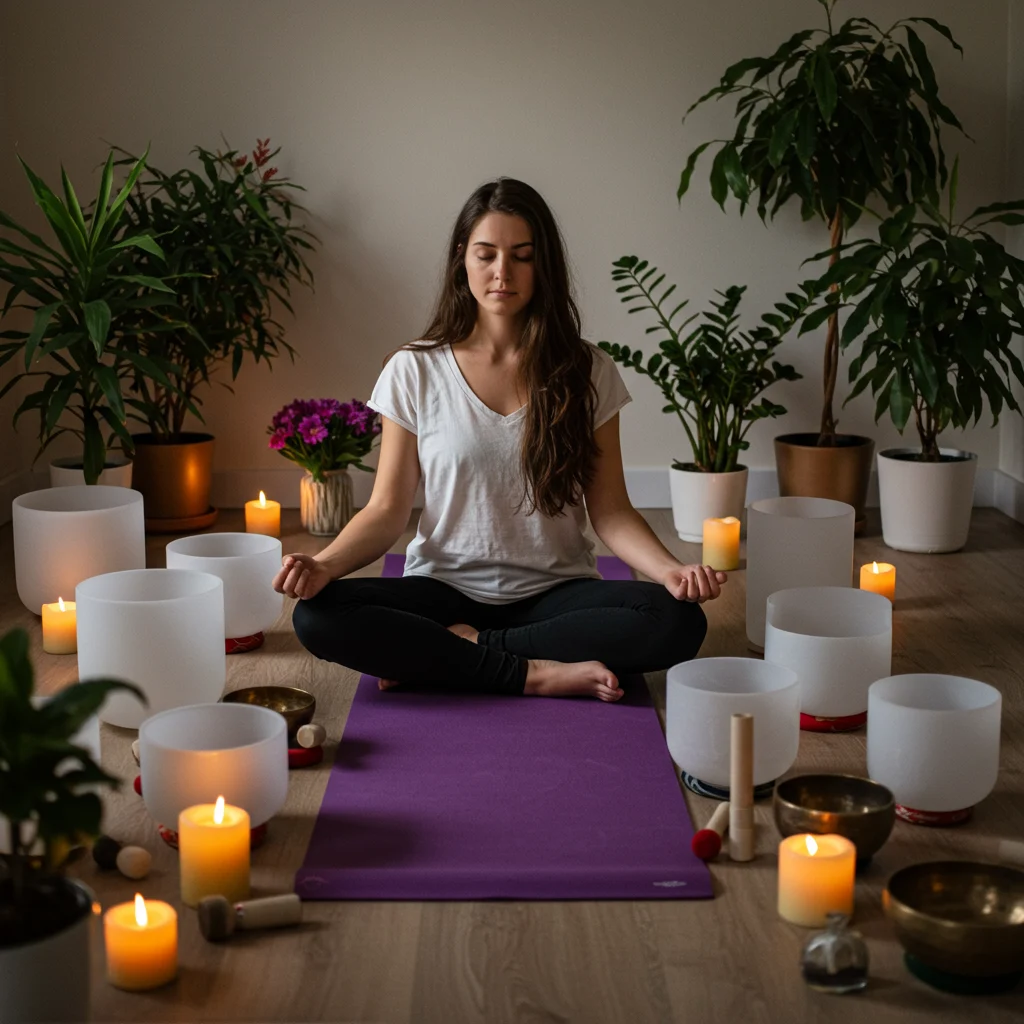
Setting Intentions Before the Session
Take a few moments before arrival to consider what you hope to gain—be it relaxation, clarity, or emotional release. Sharing your intention with the practitioner can help them tailor the session accordingly.
Practicing Mindfulness and Relaxation Techniques
Simple breathing exercises or gentle stretching before the session can help calm your mind and body. Those interested in further mindfulness practices may also wish to read about yoga retreats in Nepal for additional inspiration.
Health and Safety Considerations
While sound baths are generally safe, it’s important to be aware of individual needs and limitations. Transparency with your practitioner ensures a positive and supportive experience.

Is a Sound Bath Safe for Everyone?
Most people find sound baths to be deeply relaxing and free of adverse effects. However, those with certain medical conditions or sensitivities should take extra care.
Who Should Consult a Doctor Before Attending?
Individuals with epilepsy, severe psychiatric conditions, or those using pacemakers should consult a healthcare provider before participating. Pregnant guests may also wish to seek advice, especially in the first trimester.
Potential Contraindications and Precautions
If you have hearing sensitivities, discuss this with your practitioner so they can adjust the volume or instrument selection. Always listen to your body, and feel free to pause or end the session if discomfort arises.
Benefits of a Japanese Sound Bath Experience
A private sound bath in Kyoto offers layered benefits for the body, mind, and spirit. Each session is an invitation to step into a state of deep relaxation and self-awareness.
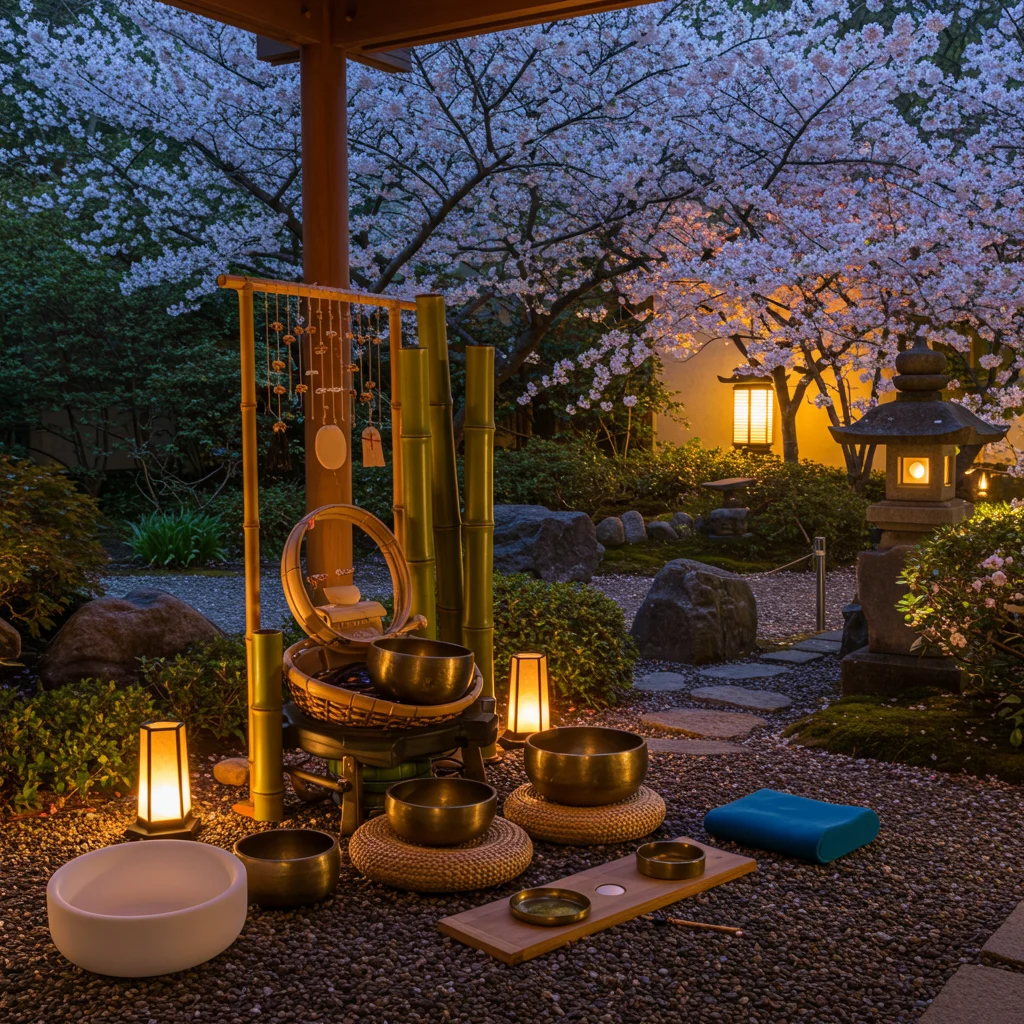
Physical Benefits: Deep Relaxation and Stress Relief
The gentle vibrations and harmonious frequencies can help reduce muscle tension, lower blood pressure, and promote restful sleep. Many participants leave feeling lighter, with a palpable sense of relief from daily stress.
Mental and Emotional Benefits
Sound baths create space for mental clarity, emotional balance, and release of accumulated tension. The meditative atmosphere encourages mindfulness and can support emotional healing.
Spiritual Benefits and Mindfulness
For many, the experience is spiritually uplifting, fostering a sense of connectedness and presence. The serenity of Kyoto’s setting further enhances these effects, helping guests realign with their inner selves.
How Often Should You Attend Sound Baths?
Frequency depends on personal goals—some attend weekly, while others reserve sound baths for special occasions or times of heightened stress. Regular sessions can deepen the benefits and foster long-term well-being.
What Instruments Are Used in Kyoto’s Sound Baths?
Kyoto’s sound bath practitioners draw from a rich palette of traditional and modern instruments, each contributing unique textures to the session.
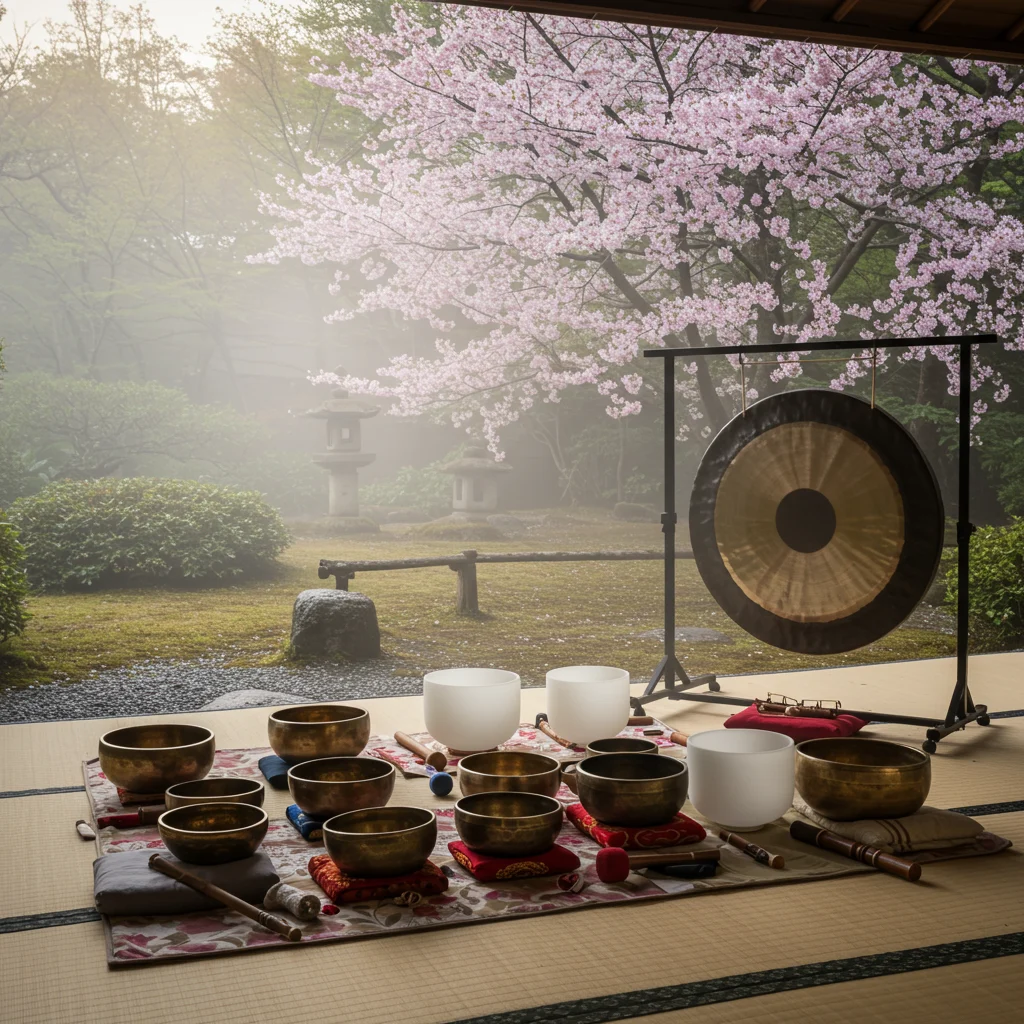
Singing Bowls: Japanese and Tibetan Varieties
Both Japanese rin bowls and Tibetan singing bowls are common in Kyoto. Their pure, sustained tones create a calming sonic environment that facilitates deep relaxation.
Gongs, Chimes, and Bells
Gongs produce powerful, all-encompassing vibrations, while chimes and bells add lightness and clarity to the soundscape. The interplay between these instruments can be both grounding and uplifting.
Shakuhachi Flute and Koto
The shakuhachi flute offers breathy, meditative melodies, while the koto provides gentle, plucked harmonies. These instruments are deeply rooted in Japanese musical tradition and evoke a sense of place unique to Kyoto.
Unique Local Instruments and Modern Additions
Some practitioners incorporate less common instruments, such as bamboo rainsticks, crystal bowls, or digital soundscapes, blending tradition with innovation to create a personalized experience.
How to Enhance Your Kyoto Sound Bath Experience
Pairing your sound bath with other wellness activities can amplify its restorative effects. Kyoto offers a range of complementary practices rooted in both tradition and contemporary wellness.

Combining Sound Baths with Meditation or Yoga
Many venues offer packages that integrate meditation or gentle yoga with sound therapy. This combination can deepen relaxation and help anchor the benefits of the session.
Pairing with Traditional Japanese Tea Ceremony
Participating in a Japanese tea ceremony before or after your sound bath can heighten your sense of mindfulness and appreciation for ritual. The slow, deliberate movements and subtle flavors complement the meditative qualities of sound healing.
Exploring Kyoto’s Wellness Offerings
Kyoto is renowned for its holistic wellness scene, including onsen baths, herbal treatments, and forest walks. Those interested in spa experiences in other destinations may enjoy our insights into the Sky Lagoon’s 7-step ritual in Iceland.
Can You Enjoy Sound Baths as a Couple or Small Group?
Private sound baths can be arranged for couples, families, or small groups, making them a memorable way to share relaxation and connection.

Private Couple and Family Sessions
Many practitioners offer sessions tailored for two or more, allowing loved ones to experience the healing effects of sound together. These intimate gatherings can deepen bonds and create lasting memories.
Special Packages for Honeymoons and Celebrations
Some venues offer special packages for anniversaries, honeymoons, or other celebrations, often including additional amenities such as floral arrangements, sweets, or commemorative photos.
Language and Cultural Considerations for International Visitors
Kyoto welcomes visitors from around the world, and many sound bath providers strive to accommodate guests of all backgrounds.

Are Sessions Available in English?
A growing number of practitioners offer sessions in English or provide bilingual guidance. It’s best to confirm language options when booking, especially if you wish to discuss intentions or preferences in detail.
Understanding Japanese Etiquette During Wellness Experiences
Respect for tradition is central to Japanese wellness culture. Removing shoes, speaking softly, and following the practitioner’s guidance are all part of the experience. Observing these customs adds to the sense of reverence and tranquility.
Testimonials and Real-Life Experiences
Hearing from others who have experienced private sound baths in Kyoto can provide reassurance and inspiration as you plan your own session.

Stories from Past Participants
Many guests describe feeling deeply relaxed, emotionally lighter, and more centered after their session. Some recount moments of clarity or insight, while others simply cherish the peacefulness and beauty of the setting.
What Do Visitors Say About Kyoto Sound Baths?
Visitors often praise the skill and attentiveness of Kyoto’s practitioners, as well as the unique atmosphere of local venues. The combination of ancient tradition and contemporary care leaves a lasting impression, making the experience a highlight of their time in Japan.
Frequently Asked Questions About Private Japanese Sound Baths
It’s natural to have questions before booking your first sound bath. Here, we address some of the most common inquiries.
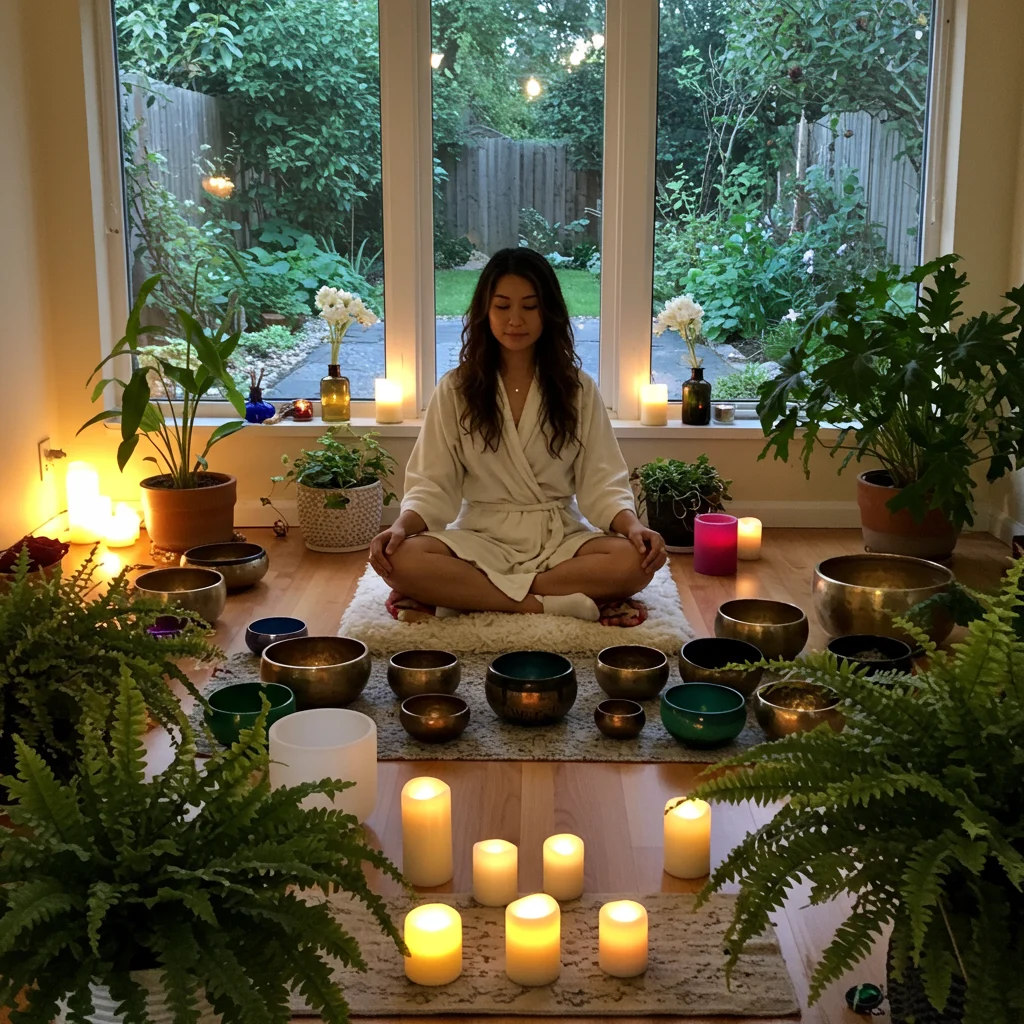
How Much Does a Private Sound Bath in Kyoto Cost?
Prices vary depending on the venue, practitioner, and session length. Expect to pay between ¥10,000 and ¥30,000 per person for a high-quality private experience. Some luxury venues may charge more, especially for group sessions or special packages.
How Long Do Sessions Last?
Most private sound baths run from 60 to 90 minutes, though shorter or longer sessions can often be arranged upon request.
Is Experience Necessary?
No prior experience is needed. Practitioners guide you through each step, making sound baths accessible to everyone.
Can Children Participate?
Children are welcome at some venues, particularly in family-oriented sessions. It’s wise to discuss this with your provider in advance, as some instruments can be intense for young ears.
Tips for Making the Most of Your Kyoto Sound Bath
A few simple practices can help you maximize the benefits and enjoyment of your private sound bath.

Arriving Early and Being Present
Arrive a little before your appointment to relax and acclimate to the setting. Take deep breaths, observe your surroundings, and let your mind settle.
Reflecting and Journaling After the Session
Take time to reflect on your experience, noting any sensations, emotions, or insights. Journaling can help consolidate these impressions and extend the benefits into daily life.
Exploring Kyoto Before or After Your Sound Bath
Pair your session with a stroll through Kyoto’s gardens, a quiet temple visit, or a traditional meal. For those inspired by thermal wellness, you may enjoy reading about the thermal hot bath day trip from Krakow to Zakopane, which offers a different approach to relaxation.
Alternative Wellness Experiences in Kyoto
Kyoto’s wellness scene extends beyond sound baths, with a range of traditional and modern practices available to visitors.
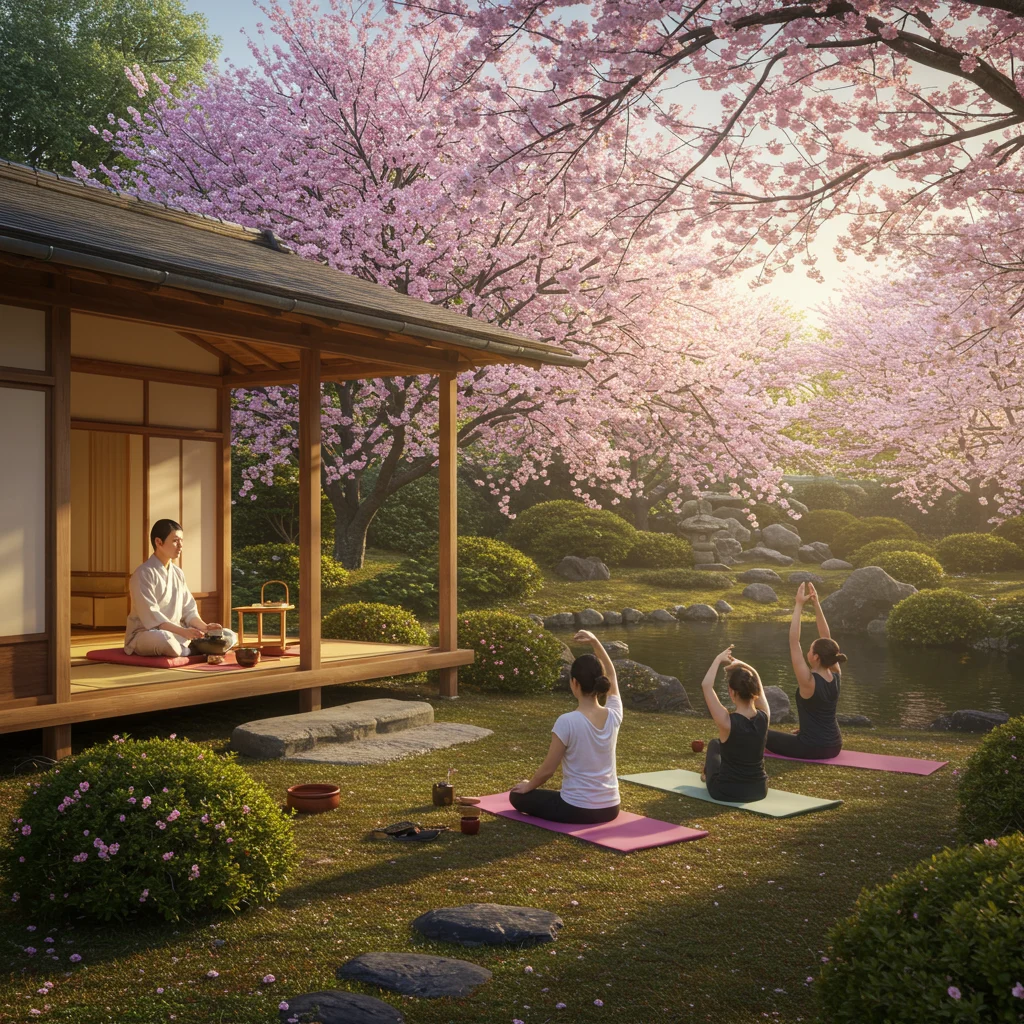
Onsen Baths and Spa Treatments
The city and its surroundings feature tranquil onsen baths and innovative spa treatments, ideal for those seeking physical relaxation and rejuvenation.
Forest Bathing (Shinrin-yoku)
Shinrin-yoku, or forest bathing, invites participants to mindfully experience the sights, sounds, and scents of the forest. This gentle practice is known to reduce stress and improve mood, much like sound healing.
Traditional Japanese Healing Arts
Other wellness offerings include reiki, shiatsu massage, and herbal therapies, each rooted in centuries-old Japanese wisdom.
Sustainable and Ethical Wellness Tourism in Kyoto
Responsible wellness tourism benefits both visitors and the Kyoto community. Supporting local practitioners helps preserve traditional knowledge and sustain small businesses.

Supporting Local Practitioners and Businesses
Choose providers who source instruments locally, honor cultural traditions, and invest in community well-being. These choices support Kyoto’s artisans and keep ancient practices vibrant for future generations.
Respecting Kyoto’s Cultural Heritage
Participating in wellness experiences with mindfulness and respect helps maintain the integrity of Kyoto’s cultural heritage. Observing etiquette, honoring sacred spaces, and engaging with authenticity all contribute to a more meaningful journey.
How to Book on Viator
Booking your private Japanese sound bath in Kyoto is straightforward with Viator, a trusted platform for travelers seeking unique experiences. Viator allows you to find tours, compare providers, and secure your spot in advance.

When booking, review session details, language options, and cancellation policies. Viator’s platform makes it easy to plan your trip and access reviews from past participants, ensuring peace of mind as you look forward to your Kyoto sound bath.
Conclusion: Embracing Tranquility in Kyoto
A private Japanese sound bath in Kyoto is more than just a wellness activity—it’s an invitation to pause, restore, and reconnect with yourself amid the city’s serene beauty. The gentle resonance of traditional instruments, combined with Kyoto’s spiritual ambiance, creates an experience that soothes the body, calms the mind, and uplifts the spirit.

If you are ready to elevate your journey to Japan, let Unisho be your trusted resource for wellness inspiration and travel insights. For more information and curated experiences, visit Unisho.
Disclaimer: This information is accurate to the best of our knowledge; however, there may be changes or mistakes. Please verify exact details on the Viator booking page.

